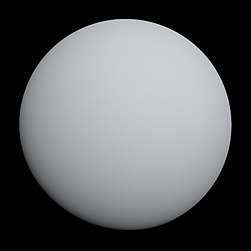Kepler-37c
| Exoplanet | List of exoplanets
| |||||
|---|---|---|---|---|---|---|
| Parent star | ||||||
| Star | Kepler-37 | |||||
| Constellation | Lyra | |||||
| Right ascension | (α) | 18h 56m 14.3078s[1] | ||||
| Declination | (δ) | 44° 31′ 05.389″[1] | ||||
| Apparent magnitude | (mV) | 9.71 | ||||
| Distance | 208.9±0.4[1] ly (64.0±0.1[1] pc) | |||||
| Spectral type | G8V | |||||
| Mass | (m) | 0.80±0.07 M☉ | ||||
| Radius | (r) | 0.77±0.03 R☉ | ||||
| Temperature | (T) | 5417±75 K | ||||
| Metallicity | [Fe/H] | -0.32±0.07 | ||||
| Age | 5.66 Gyr | |||||
| Physical characteristics | ||||||
| Radius | (r) | 0.742+0.065 −0.083 R⊕ | ||||
| Orbital elements | ||||||
| Semi-major axis | (a) | 0.1368+0.0011 −0.0014 AU | ||||
| Eccentricity | (e) | 0 | ||||
| Orbital period | (P) | 21.301886+0.000046 −0.000044 d | ||||
| Inclination | (i) | 89.07+0.19 −0.33° | ||||
| Discovery information | ||||||
| Discovery date | 2013 | |||||
| Discoverer(s) | ||||||
| Discovery method | Transit | |||||
| Discovery site | Kepler Space Observatory | |||||
| Discovery status | Confirmed | |||||
Kepler-37c is an extrasolar planet (exoplanet) discovered by the Kepler space telescope in February 2013.[2] With an orbital period of 21 days,[3] it is located 209 light years away,[1] orbiting its parent star Kepler-37 in the constellation Lyra.[3] Its size is slightly smaller than Venus.[3]
See also
References
- 1 2 3 4 5 Brown, A. G. A.; et al. (Gaia collaboration) (August 2018). "Gaia Data Release 2: Summary of the contents and survey properties". Astronomy & Astrophysics. 616. A1. arXiv:1804.09365. Bibcode:2018A&A...616A...1G. doi:10.1051/0004-6361/201833051. Gaia Data Release 2 Vizier catalog entry
- ↑ Harwood, William. "Kepler telescope spots smallest exoplanet yet". Spaceflight Now Inc. Retrieved 25 February 2013.
- 1 2 3 Black, Charles. "NASA's Kepler discovers small planet system". SEN TV LIMITED. Archived from the original on 23 February 2013. Retrieved 25 February 2013.
This article is issued from
Wikipedia.
The text is licensed under Creative Commons - Attribution - Sharealike.
Additional terms may apply for the media files.




